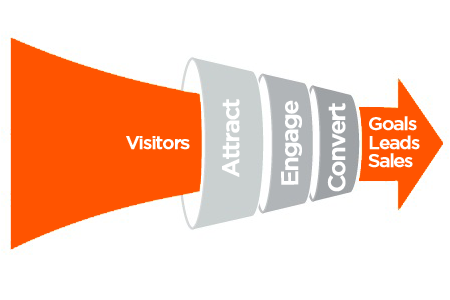
CONVERSION! This is one of the – if not THE – most important word in marketing.
Firstly, what is a “conversion” in marketing speak?

What is conversion marketing? A conversion is a tactic that influences a customer or potential customer to take a specific action your site. This could be anything from clicking a call to action (CTA), filling out a form or entering an email address. Most commonly though, it’s used to describe the moment that a non-paying customer turns into a paying customer. Either way, without conversions, you probably won’t have a business.
This is why a key and crucial metric within any business is its conversion rate. A conversion rate is the rate at which customers are converting (or performing a specific action) on your site. For example, if you have 1000 visitors a day to your site and 100 of them become customers, your daily conversion rate would be 10%.
Optimising conversion rate (otherwise referred to as Conversion Rate Optimisation or CRO) is an important task for every business that 99% of the time falls to the marketing department – however, it’s something that almost everyone in the entire company has the power to effect.
Achieving a high conversion rate means more sales, more happy customers and a potentially much lower cost per acquisition (CPA) if done right!
CRO can be improved in many different ways and there are countless tactics that you can use or experiment with. For example, if research tells you your customers find your site confusing, you could change the entire design or layout to make it a much clearer experience. Alternatively, you might just experiment with the colour of a button, or just change the language in your CTA to improve conversions.
The most important thing about conversion marketing is to keep experimenting with different tactics and figuring out what works. A high rate of cart abandonment at the buying stage could be fixed by sending a special offer email to bring customers back in, or simply just tweaking a signup form. Although big changes can wield dramatic and immediate results, often, it’s a host of incremental changes that make the most difference over time for a business.
In this article we’re going to talk about:
- Who uses conversion marketing?
- How to develop a conversion marketing strategy?
- Conversion marketing for direct sales companies
- Conversion marketing for ad and article revenue
- Conversion marketing for subscription services
- Conversion marketing for e-commerce
- Which kinds of customers can you attract with conversion marketing?
- The first step to successful conversion marketing
- How do you optimise to convert different groups of customers?
- Tips for increasing your conversion rate
Who uses conversion marketing?

No matter what your business is, you probably still need or want customers to perform certain actions when on your site. This means any business can add conversion marketing to their list of marketing efforts!
This said, it’s much easier for businesses that are online, have a website and/or market digitally. Making changes online are much easier and quicker than making changes in print – it’s usually a lot less expensive too! It’s businesses with an online presence that we’re going to focus on in this article.
If you receive money from advertising – let’s say you’re a travel blog or an online newspaper – then you need to use tactics to encourage customers to click on your site advertising. This often involves clever or catchy headings with cleverly placed ads and strategic designs.
You could be a direct sales business, with your entire revenue coming from selling your product directly to customers in a one-off transaction. If so, your conversion rate is linked even more directly with the survival of your business. Here you’d usually use tactics that persuade customers to make a purchase immediately. This is the hardest of all conversions and we’ll talk about this in more depth below.
How to develop a conversion marketing strategy?
Firstly, this depends on what kind of company you are and how you make money. E-commerce sites will have a different strategy to ad revenue sites and strategies can even differ if you’re in the same field.
Conversion marketing for direct sales companies

If you’re a direct sales business selling a product directly to a consumer, then your efforts will be around encouraging customer purchases on your site (it could also be to request information or download a brochure, but with the ultimate aim of making a purchase). You need to be able to convince your customers to engage with you to the level of parting with their money – which means many direct sales businesses have to be extremely good at converting, often employing many persuasion marketing tactics. This is why successful direct sales marketers are often the best marketers in the game.
Most direct sales marketers understand that they don’t only need to get the attention of their customers fast, they need to keep it. Once a customer has left their site, they forget about the business with each minute that passes by. In fact, the MIT response time study on responding to internet leads have proved that contacting customers within 5 minutes of their visiting your site as opposed to within 30 minutes means you’re 100x more likely to connect with them and 21x more likely to turn them into a qualified lead.
This is why some of successful tactics for conversion marketing with direct sales involves creating immediate contact between customers and your business. Clever tools such as ResponseiQ for example, can be added onto your website easily and mean you can make contact with customers in less than 30 seconds! Imagine what that could do to your conversion rate?
They use the tactic of reduced communication barriers which encourage the customers to give their phone number. The easily installable tool then automatically and immediately calls the right person or people within your business (this may be telemarketers, sales people or a collection of employees). The customer details are sent to whomever picks up the alert, allowing the sales team to call your customer within just 27 seconds of them entering their number on your site. Impressive.
But not every business has the capabilities or need to speak with their web visitors. More passive tactics like using chatbots, landing pages, lead signup forms or other conversion marketing tactics could be more suitable. The easier the purchase process is, the easier it should be to increase conversions. If your product is easily downloadable from your website for example, there will be less barriers for customers than buying a physical product.
If you’re selling a product that is more expensive or requires more thought on the part of the customer, you probably want to encourage visitors to spend more time on your site or to request more information about your product and/or service. You will want to build trust with your customer and (especially if you make sales in person) make sure they are not just a lead, but a qualified lead.
Encouraging your customers to call and speak with you as well as promoting detailed and downloadable information packs in exchange of email addresses or telephone numbers are often popular strategies.
Conversion marketing for ad and article revenue
If you create revenue from ad clicks, your strategy will focus on encouraging customers to click as many ads – or as much content as possible. Design and layout is important with all web pages but especially so in this case as design (and snappy copy) is main attraction for customers clicking on the desired links.
Many companies in this sector have turned to what is now described as “link bait” or “click bait” – in effect, putting outrageous headlines and images within ads to encourage clicks. The problem with this is, although it can generate a curious click, if the content doesn’t correspond closely with what the snipped or ad promised, the customer will become annoyed and less likely to click on these types of articles over time. The happier the customer is with what they find once they’ve clicked, the longer they’ll stick around and the more revenue you’ll create.
Conversion marketing for subscription services
Offering free trials or discounted trials is a common tactic with subscription services. It allows customers to try your product without commitment and fall in love with your service or product before parting with cash. If they see the value in what they find, their subscription could continue for years.
Conversion marketing for e-commerce
E-commerce sites need to make it as easy as possible for customers to find the products they want and continue through to complete the shopping cart. Layout and products should be easily accessible, easily searchable and be presented in the most effective way by use of images, videos, description and price.
For e-commerce, this attention to detail is especially important at the checkout stage of the process. If customers encounter anything unexpected during checkout, they are highly likely to abandon their shopping cart. Making check out as smooth as possible, asking for no unnecessary information from customers and ensuring they’re aware of anything important such as shipping cost, time, stock availability etc before they get to the paying stage, will help to decrease drop off and increase conversion.
Which kinds of customers can you attract with conversion marketing?

Any demographic can be targeted with conversion marketing tactics. What’s more, you don’t need to focus on a particular customer segment because these tactics should apply to every single customer that ends up on your website. If you do wish to focus on a particular customer segment this is also possible and we’ll talk about it later in the article.
There are lots of different ways customers will arrive on your site but usually it’s due to one of the following:
1. Clicking on a display advert when visiting another site.
This may mean they had browsed your website at an earlier date and saw a redirect ad. The customer could also have been visiting another website or publication and became attracted to an advert for your business, visiting your site for the first time.
2. Typed your web address into the address bar or search engine.
The customer has heard of your business before by word of mouth or seen/heard an advert somewhere else and search for you directly. They could also be a repeat customer.
3. Clicked on a referral link sent to them by a friend.
Someone they know (potentially a current customer of yours) has sent them a link. This could be thanks to a referral scheme you have in place or because their friend has done some research for them.
4. Clicked on a social media post.
Anyone who has clicked on one of your social media ads, posts or page links.
5. Clicked a link you sent them via email or other media.
These customers have responded to your outreach and are returning to your website.
6. Typed a related search term into a search engine like Google and found your site in the search results.
If your website is indexed by Google, your business should appear somewhere in a search engine’s results when customers enter related keywords or phrases.
Out of these scenarios the most likely one is number 6. This is why good SEO is so important for businesses, because search is how the majority of their customers find them.
The first step to successful conversion marketing

Whatever type business you are, the first step to conversion marketing is the most important. This step is simply getting your customers to stay on your site once they’ve found it! It might sound simple, but that’s where many companies make their first mistake…
Did you know that a customer spends an average of just 8 seconds on a website before they decide to stay or bounce? That’s not much time at all. This is why convincing your customer to stick around and hear what you have to say should be the number 1 priority.
“The customer found our site, so they must be interested. Right?” Wrong!
If a customer has found their way onto your site then unless you’re using some dodgy AdWords or other online ads, there’s a very good chance that they are interested in your product or service. You must remember that your potential customer, although initially interested, is likely just doing some preliminary research in the area of what your business provides. They’re probably checking out lots of other sites with similar solutions, services or products and just want to get an overview of how you compare.
This means you’re up against any other companies coming up in Google Search. Even if you have great SEO and come up first for your customers search term, you can still lose them to a competitor or just lose their interest.
How do you optimise to convert different groups of customers?

There are several ways to do this but one of the most effective is to build landing pages. Landing pages are the first page that someone sees when they visit your site. Often, the first page of your site someone lands on won’t be the homepage unless the customer has searched for you directly. The page they see first will be determined by what keyword or phrase they have searched. The search engine will present them with a link to the most relevant page on your site.
This means that as a businesses you need to make every page of your website count, especially products or services pages. The right keywords and information should be present in order to satisfy the needs of visitors to those pages.
You can attract customers to landing pages in several different ways.
Some of them are:
1. Display advertising
2. AdWords & SEO marketing
3. Email / Text
4. Social Media
Sometimes if you’re trying to attract different segments of customers or if you have a special offer, you may wish to create permanent or temporary landing pages for your site. You may also want to do this if you are A/B testing or testing multiple versions of a home page or webpage to see which converts best. Landing pages enable you to target groups of customers by creating very specific information that’s pertinent to their needs. For example, maybe your business has a special offer for students. Your site doesn’t specifically focus on students, although you know they are a significant segment of your market…
So what do you do?
You can create ads with keywords specifically aimed at attracting your target market to your offer. Once they click on the offer, they will be directed to a landing page that’s tailored to them. You present what the key benefits of your product are to this demographic and focus on persuading them to enter your marketing funnel, or to become a customer immediately.
Tips for increasing your conversion rate
Before you go, here are some best practice tips for CRO on your website!
Easy Navigation
Make sure your website is really easy to navigate. Include a search bar on every page, keep any drop down menus succinct and make it as easy as possible for your customer to find what they’re looking for. If they can’t, they’ll leave.
Mixed Media
Using both text, images and video can help to increase conversion on your site.
Clear Messaging
Ensure you explain who you are and what you do in the most effective way possible. Focus on your value propositions and conveying these to your customer. Also, include all the important information about your business, service or product in order to help answer your customers questions and address any objections to purchasing that they may have.
Clear CTA’s
Clear call to actions that encourage customers to perform an action. Include the benefit to the customer where possible: CTA’s like “sign up now” don’t work as well as “get started right now”.
Good luck with your conversion marketing. Remember, it’s all about trials and testing to see what works for you. Once you see results, keep going; harder, better, faster, stronger, conversion marketing is never over.